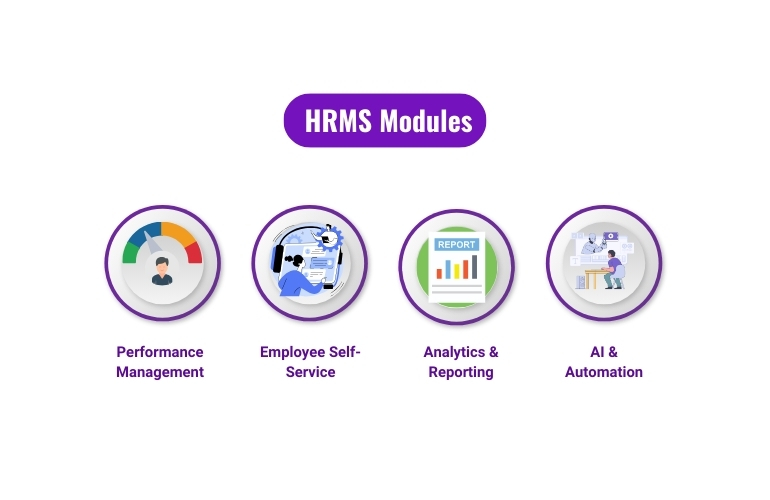The workplace has undergone a seismic shift over the past few years. With the rise of remote work, hybrid models, and globally distributed teams, managing employee leave has become more complex than ever. For HR professionals, ensuring accuracy, compliance, and efficiency in leave management is no longer optional—it’s critical.
Yet, many organizations still rely on outdated systems that are prone to errors and inefficiencies. Did you know that 56% of companies still manage leave manually, leading to payroll errors, compliance risks, and employee dissatisfaction?
The good news? Leave management applications are evolving rapidly. In 2025, these tools are set to revolutionize workforce management with features like human capital management integration, employee reimbursement policy automation, and compatibility with corporate payroll services. Let’s dive into how these advancements can empower HR professionals to stay ahead in a fast-changing environment.
The Evolution of Leave Management Applications
From Manual to Automated Systems
Managing leave manually is a labor-intensive process riddled with challenges like:
- Errors in leave calculations.
- Lack of real-time data access.
- Mismanagement of overlapping leave requests.
The solution lies in cloud-based and mobile-friendly tools, which provide real-time access to leave records, streamline approvals, and ensure compliance with company policies. By automating these processes, businesses can eliminate human error and save valuable time.
Technological Drivers
The advancements shaping leave management in 2025 include:
1. AI and Automation: Automatically calculate leave balances, detect anomalies, and send reminders for pending approvals.
2. Integration with Human Capital Management Systems: Unified platforms ensure seamless tracking of employee data, from attendance to payroll.
Trend Spotlight: Predictive Analytics
Imagine forecasting absenteeism trends based on historical data or identifying potential bottlenecks in resource allocation. Predictive analytics is transforming leave management into a strategic function that directly impacts workforce planning.
Statistic: Companies using predictive analytics in HR report a 25% improvement in resource utilization, according to a 2024 report by Deloitte.
Why HR Professionals Need Advanced Leave Management Tools
Complex Workforce Dynamics
Managing a modern workforce means tackling:
- Diverse time zones in remote teams.
- Compliance with regional labor laws.
Without advanced tools, HR teams risk falling behind in their ability to track and manage leave efficiently across various geographies.
Employee Expectations
Employees today demand:
- Transparency in leave balances and policies.
- Faster leave approvals linked to employee reimbursement policies for travel or healthcare expenses.
Advanced tools meet these demands with real-time dashboards and automated workflows.
Business Impact
The cost of absenteeism is significant. Inaccurate leave tracking can lead to:
- Overpayments in payroll.
- Resource shortages affecting business operations.
Statistic: According to SHRM, businesses lose an average of $3,600 per employee annually due to absenteeism. Proactive leave planning can drastically reduce this figure.
Key Features of Next-Gen Leave Management Applications
1. Human Capital Management Integration
By integrating with human capital management systems, leave management applications provide:
- A centralized view of employee data, ensuring accuracy across HR functions.
- Alignment of leave policies with broader workforce strategies.
2. Automated Policies
Say goodbye to manual workflows. Advanced systems offer:
- Real-time compliance updates for labor laws.
- Automated leave approvals and escalations, ensuring no delays.
3. Corporate Payroll Services Compatibility
Seamless compatibility with corporate payroll services means:
- Accurate deductions for unpaid leaves.
- Automated payouts for accrued leaves, reducing payroll errors.
4. Mobile Accesibility
With remote work on the rise, employees need flexible access to leave management systems. Mobile apps allow them to:
- Request leave on the go.
- Track balances and approval status in real time.
Benefits of Advanced Leave Management Applications
Improved Efficiency
Automated processes reduce the HR workload by 40%, freeing up time for strategic tasks like employee engagement and workforce planning.
Cost Savings
Minimized payroll errors and improved compliance lead to significant cost reductions. For instance, integrating leave data with payroll ensures accurate payouts, avoiding financial discrepancies.
Enhanced Employee Satisfaction
When employees can track leave balances transparently and receive faster approvals, it boosts trust and morale.
Statistic: Companies with streamlined leave management systems report a 30% higher employee satisfaction rate, according to Gallup.
Data-Driven Insights
Advanced analytics provide insights into:
- Leave trends to predict absenteeism.
- Optimal resource allocation for improved productivity.
Leading Leave Management Applications in 2025
Top Tools for HR Professionals
1. ConfluxHR: Ideal for small to mid-sized companies, offering user-friendly dashboards and mobile access.
2. Zoho People: Comprehensive leave tracking with built-in compliance tools.
3. Workday: Perfect for large enterprises, featuring advanced analytics and workforce planning capabilities.
Case Study: Multinational Success with Automation
A global manufacturing company adopted predictive analytics and automated workflows for leave management. Results:
- 30% reduction in absenteeism.
- Improved resource allocation during peak periods.
How to Choose the Right Leave Management Tool
Step 1: Assess Organizational Needs
Consider the size of your workforce, remote work policies, and compliance requirements.
Step 2: Look for HCM Integration
Ensure compatibility with existing human capital management platforms to streamline operations.
Step 3: Evaluate Payroll Integration
Choose a tool that aligns with corporate payroll services for accurate deductions and payouts.
Step 4: Prioritize Usability
The tool should be intuitive for employees and HR teams, minimizing the learning curve.
Conclusion: Why ConfluxHR is Your Ideal Partner
The workplace of 2025 demands smarter, more efficient leave management systems. With advancements in human capital management, employee reimbursement policies, and corporate payroll services, HR professionals have the tools to simplify processes, enhance compliance, and boost employee satisfaction.
ConfluxHR is designed to help you navigate this evolving landscape. From seamless policy automation to predictive insights, ConfluxHR ensures your leave management aligns with the demands of modern HR practices. Take the next step toward transforming your HR operations—choose ConfluxHR for a smarter, more effective workforce management solution.














